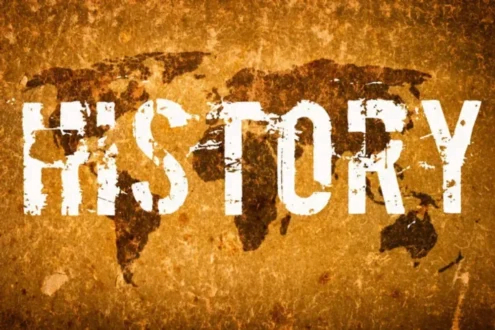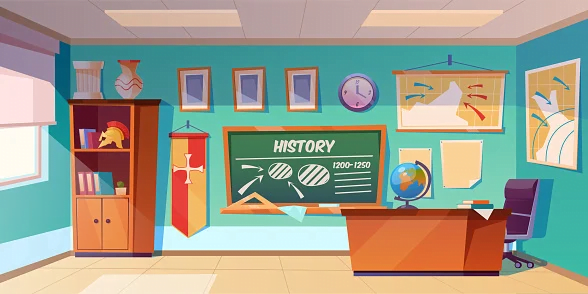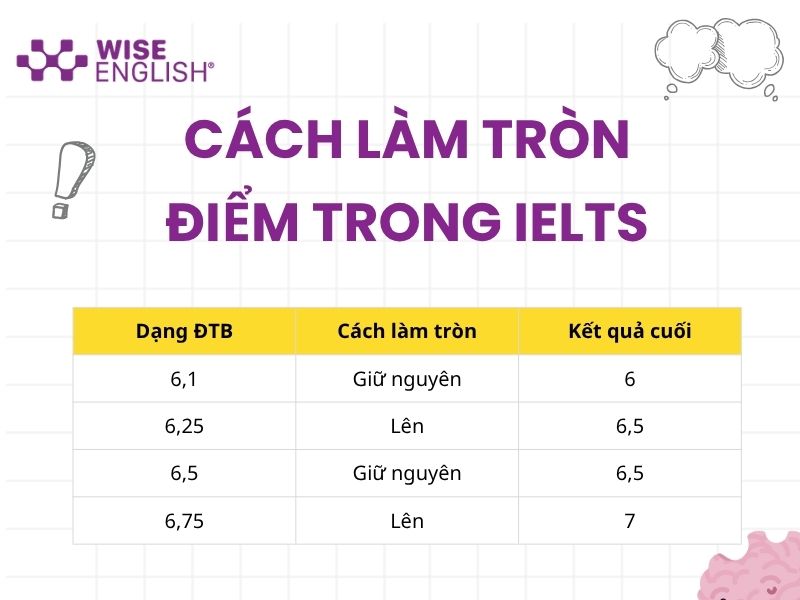Bạn đang tìm kiếm những bài về topic What is history IELTS Reading để luyện tập kỹ năng đọc hiểu và mở rộng kiến thức? Bạn muốn biết những câu hỏi và đáp án của những bài đọc này để có thể tự kiểm tra và cải thiện kết quả? Bạn đã đến đúng nơi rồi đấy!
Trong bài viết này, WISE English sẽ tổng hợp cho bạn 5 bài về topic What is history IELTS Reading kèm đáp án chi tiết. Những bài đọc này sẽ giúp bạn hiểu thêm về khái niệm, phương pháp và ý nghĩa của lịch sử, cũng như những vấn đề và thách thức mà các nhà sử học phải đối mặt. Bạn cũng sẽ được làm quen với những từ vựng, cấu trúc và dạng câu hỏi thường gặp trong IELTS Reading. Đừng bỏ lỡ cơ hội nâng cao trình độ tiếng Anh của bạn với những bài IELTS Reading về topic What is history kèm đáp án này. It’s time to practice IELTS Reading with me!

I. What is history?: The history of Glass
Passage

From our earliest origins, man has been making use of glass. Historians have discovered that a type of natural glass – obsidian – formed in places such as the mouth of a volcano as a result of the intense heat of an eruption melting sand – was first used as tips for spears. Archaeologists have even found evidence of man-made glass which dates back to 4000 BC; this took the form of glazes used for coating stone beads. It was not until 1500 BC, however, that the first hollow glass container was made by covering a sand core with a layer of molten glass.
Glass blowing became the most common way to make glass containers from the first century BC. The glass made during this time was highly coloured due to the impurities of the raw material. In the first century AD, methods of creating colourless glass were developed, which was then tinted by the addition of colouring materials. The secret of glass-making was taken across Europe by the Romans during this century. However, they guarded the skills and technology required to make glass very closely, and it was not until their empire collapsed in 476 AD that glass-making knowledge became widespread throughout Europe and the Middle East. From the 10th century onwards, the Venetians gained a reputation for technical skill and artistic ability in the making of glass bottles, and many of the city’s craftsmen left Italy to set up glassworks throughout Europe.
A major milestone in the history of glass occurred with the invention of lead crystal glass by the English glass manufacturer George Ravenscroft (1632 – 1683). He attempted to counter the effect of clouding that sometimes occurred in blown glass by introducing lead to the raw materials used in the process. The new glass he created was softer and easier to decorate, and had a higher refractive index, adding to its brilliance and beauty, and it proved invaluable to the optical industry. It is thanks to Ravenscroft’s invention that optical lenses, astronomical telescopes, microscopes and the like became possible.
In Britain, the modem glass industry only really started to develop after the repeal of the Excise Act in 1845. Before that time, heavy taxes had been placed on the amount of glass melted in a glasshouse, and were levied continuously from 1745 to 1845. Joseph Paxton’s Crystal Palace at London’s Great Exhibition of 1851 marked the beginning of glass as a material used in the building industry. This revolutionary new building encouraged the use of glass in public, domestic and horticultural architecture. Glass manufacturing techniques also improved with the advancement of science and the development of better technology.
From 1887 onwards, glass-making developed from traditional mouth-blowing to a semi-automatic process, after factory- owner HM Ashley introduced a machine capable of producing 200 bottles per hour in Castleford, Yorkshire, England – more than three times quicker than any previous production method. Then in 1907, the first fully automated machine was developed in the USA by Michael Owens – founder of the Owens Bottle Machine Company (later the major manufacturers Owens- Illinois) – and installed in its factory. Owens’ invention could produce an impressive 2,500 bottles per hour. Other developments followed rapidly, but it was not until the First World War when Britain became cut off from essential glass suppliers, that glass became part of the scientific sector. Previous to this, glass had been seen as a craft rather than a precise science.
Today, glass making is big business. It has become a modem, hi-tech industry operating in a fiercely competitive global market where quality, design and service levels are critical to maintaining market share. Modem glass plants are capable of making millions of glass containers a day in many different colours, with green, brown and clear remaining the most popular. Few of us can imagine modem life without glass. It features in almost every aspect of our lives – in our homes, our cars and whenever we sit down to eat or drink. Glass packaging is used for many products, many beverages are sold in glass, as are numerous foodstuffs, as well as medicines and cosmetics.
Glass is an ideal material for recycling, and with growing consumer concern for green issues, glass bottles and jars are becoming ever more popular. Glass recycling is good news for the environment. It saves used glass containers being sent to landfill. As less energy is needed to melt recycled glass than to melt down raw materials, this also saves fuel and production costs. Recycling also reduces the need for raw materials to be quarried, thus saving precious resources.
Question
Questions 1-8
Complete the notes below.
Choose ONE WORD ONLY from the passage for each answer.
Write your answers in boxes 1-8 on your answer sheet.
The History of Glass
• Early humans used a material called 1…………………………… to make the sharp points of their 2……………………………
• 4000 BC: 3…………………………… made of stone were covered in a coating of man-made glass.
• First century BC: glass was coloured because of the 4…………………………… in the material.
• Until 476 AD: Only the 5…………………………… knew how to make glass.
• From 10th century: Venetians became famous for making bottles out of glass.
• 17th century: George Ravenscroft developed a process using 6…………………………… to avoid the occurrence of 7…………………………… in blown glass.
• Mid-19th century: British glass production developed after changes to laws concerning 8……………………………
Questions 9-13
In boxes 9-13 on your answer sheet, write
TRUE if the statement agrees with the information
FALSE if the statement contradicts the information
NOT GIVEN if there is no information on this
9. In 1887, HM Ashley had the fastest bottle-producing machine that existed at the time.
10. Michael Owens was hired by a large US company to design a fully-automated bottle manufacturing machine for them.
11. Nowadays, most glass is produced by large international manufacturers.
12. Concern for the environment is leading to an increased demand for glass containers.
13. It is more expensive to produce recycled glass than to manufacture new glass.
Answer
|
Question
|
Answer
|
|---|---|
|
1
|
obsidian
|
|
2
|
spear
|
|
3
|
beads
|
|
4
|
impurities
|
|
5
|
Romans
|
|
6
|
lead
|
|
7
|
clouding
|
|
8
|
taxes
|
|
9
|
True
|
|
10
|
False
|
|
11
|
Not Given
|
|
12
|
True
|
|
13
|
False
|
Xem thêm:
CÁCH LÀM TRUE FALSE NOT GIVEN CHUẨN CHỈ VỚI 3 BƯỚC VÀ CÁC LỖI SAI NÊN TRÁNH
II. A new stage in the study and teaching of history
Passage

For hundreds of years, historians have relied on written or printed documents to provide the bulk of their source materials, and they have largely communicated with students and the wider public by writing books and journal articles. Today, however, the printed word is being superseded by a diversity of forms of communication, above all moving images on video or film
A The development of this new form of communication is leading to a growing gap between the practice of professional historians based in academia, and the practice of those aiming to popularise the study of history among the general public, and to encourage people to create their own records for the future. On the one hand, there are mainstream academics who continue to use only the written word as they examine more and more fields with an ever- increasing number of sophisticated methodologies. On the other hand, film and video, especially as broadcast on television, are probably the major influence on the public’s consciousness of history, as they see film of events of fifty or a hundred years ago, events they had previously only read about.
B In a related development, a great many people now document local and family events in the form of videos; many schools, too, produce video yearbooks. All these visual records may well prove to be invaluable sources of information for future historians. The glaring contradiction is that the two approaches-the academic and what we might term the popular – have intersected very little: with a few notable exceptions, professional historians have tended to avoid involvement in television programmes about history, and have even less impact on what is being captured and preserved on video. And the potential of moving images has wielded negligible influence on the academic study of history.
C This gulf can be seen as resulting from the willingness or otherwise of individual historians to accept the validity of new forms of communication in the study of history. This is not the first time that the question has arisen. The study of history, as conceived of today, began with the transition from oral to literate culture, leading to the earliest written records and the earliest historical studies. The next great shift came with the advent of printing, which transformed everything. Today, as the printed word loses its dominance, historians are faced with a variety of forms of communication, ranging from simple audiotape to the promising complexities of videodisks linked with computers. As yet, however, the use of moving images to record current events for the benefit of future historians does not even have a commonly agreed name.
D This does not mean that mainstream historians have totally rejected the use of moving images as sources: the majority seem intrigued by the idea, and valuable research has been carried out into the history and analysis of films with a broad circulation, using them as a source of information on the social and intellectual history of the twentieth century. Journals such as American History Review have played a significant role in this field.
E Yet the number of historians using moving images in their research or teaching is very small. The barrier seems to be that the profession is structured around the medium of the written word, and is somewhat insulated in its academic setting. The use of moving images presents a substantial challenge to this setting and its assumptions. As a result, historians have rejected the training, the institutions, the motivations and the professional structures that would be needed in order to use moving images effectively. Above all, they have rejected the necessity to learn complicated new skills.
F So why should historians make this change? clearly, films or videos of events and people can be used as solid evidence of the past, linked to the words of the narrator (whether a television presenter/historian or a university teacher giving a lecture) but carrying information in their own right. Film has reintroduced the oral form as a mode of research and communication for documenting historical events. Now, with moving images, people are reminded that oral communication is not limited to words: it also includes body language, expression and tone, and is embedded in a context. Little of this is evident in a written transcript. A further effect of video and film is that the narrator gives up some control and has less need to give explanations, while the viewer becomes involved in the process of interpreting and understanding history.
G Film or videotape can also aid historians by simplifying the work of the interviewer. Instead of trying to carry on an interview while simultaneously making notes about setting and other unspoken data, this new kind of historian can concentrate on the interview itself, and study the film later. The many benefits of using moving images as historical evidence easily outweigh worries about cost, technical skills, or the effect of a camera on a person telling his or her story. Moving images enhance the quality of historical research, and suggest new directions for historians to explore.
Question
Questions 1-9
Reading Passage has seven paragraphs, A-G.
Which paragraph contains the following information?
Write the correct letter, A-G, in boxes 1-9 on your answer sheet.
NB You may use any letter more than once.
1 an overview of the range of methods that have been used over time to document history
2 the main reason why many historians are unwilling to use films in their work
3 a reference to some differences between oral and written communication
4 how most citizens today gain an understanding of history
5 how current student events are sometimes captured for future audiences
6 mention of the fact that the advantages of film are greater than the disadvantages
7 the claim that there is no official title for film-based historical work
8 reference to the active role the audience plays when watching films
9 a list of requirements that historians see as obstacles to their use of film to record history
Questions 10-14
Do the following statements agree with the claims of the writer in Reading Passage?
In boxes 10-14 on your answer sheet, write
YES – if the statement reflects the claims of the writer
NO – if the statement contradicts the claims of the writer
NOT GIVEN – if it is impossible to say what the writer thinks about this
10 The needs of students in school have led to improvements in the teaching of history.
11 Academic and popular historians have different attitudes towards the value of innovations in communication.
12 It is common for historians to play a major role in creating historical documentaries for television.
13 Articles in American History Review have explored aspects of modern history through popular films.
14 Developments in technology are influencing a range of academic subjects.
Answer
|
Question
|
Answer
|
|---|---|
|
1
|
C
|
|
2
|
E
|
|
3
|
F
|
|
4
|
A
|
|
5
|
B
|
|
6
|
G
|
|
7
|
C
|
|
8
|
F
|
|
9
|
E
|
|
10
|
NOT GIVEN
|
|
11
|
YES
|
|
12
|
NO
|
|
13
|
YES
|
|
14
|
NOT GIVEN
|
III. The Can – A Brief History Lesson (đề thi ngày 03/09/2022)

A. The story of the can begins in 1795 when Nicholas Appert, a Parisian, had an idea: why not pack food in bottles like wine? Fifteen years later, after researching and testing his idea, he published his theory: if food is sufficiently heated and sealed in an airtight container, it will not spoil. In 1810 Peter Durand, an Englishman, wanted to surpass Appert’s invention, so he elected to try tin instead of glass. Like glass, tin could be sealed airtight but tin was not breakable and was much easier to handle. Durand himself did no canning, but two other Englishmen, Bryan Donkin and John Hall, used Durand’s patent. After experimenting for more than a year, they set up a commercial canning factory and by 1813 they were sending tins of food to British army and navy authorities for trial.
B. Perhaps the greatest encouragement to the newborn canning industry was the explosion in the number of new colonial territories. As people and goods were being transported to all parts of the world, the can industry itself was growing in new territories. Englishmen who emigrated to America brought their newfound knowledge with them. One of these was Thomas Kensett, who might fairly be called the father of the can manufacturing industry in the United States. In 1812 he set up a small plant on the New York waterfront to can the first hermetically sealed products in the United States.
C. Just before the Civil War, a technical advance by canners enabled them to speed up production. Adding calcium chloride to the water in which cans were cooked raised the water temperature, speeding up the canning process. Also for almost 100 years, tin cans were made by artisans by hand. It was a laborious process, requiring considerable skill and muscle. As the industrial revolution took hold in the United States, the demand for cans increased and machines began to replace the artisans’ handiwork. A good artisan could make only 10 cans a day. True production progress in can-making began in 1922, when American engineers perfected the body-making process. New methods soon increased production of cans to as many as 250 a minute.
D. As early as 1940, can manufacturers began to explore the possibility of adapting cans to package carbonated soft drinks. The can had to be strengthened to accommodate higher internal can pressures created by carbonation (especially during warm summer months), which meant increasing the thickness of the metal used in the can ends. Another concern for the new beverage can was its shelf life. Even small amounts of dissolved tin or iron from the can could impair the drinking quality of drinks. Also the food acids, including carbonic, citric and phosphoric, in soft drinks presented a risk for the rapid corrosion of exposed tin and iron in the can. At this point the can was upgraded by improving the organic coatings used to line the inside. The can manufacturers then embarked on a program of material and cost savings by reducing both the amount of steel and the amount of coating used in can making. These efforts were in part inspired by a new competitor – aluminum.
E. Beverage cans made from aluminum were first introduced in 1965. This was an exciting innovation for the packaging industry because the aluminum can was made with only two pieces – a body and an end. This made production easier. Some of the reasons for the aluminum can’s acceptance were its ductility, its support of carbonation pressure, its lighter weight and the fact that aluminum does not rust. Both steel and aluminum cans used an easy-open end tab but the aluminum tab was much easier to make. Perhaps the most critical element in the aluminum can’s market success was its recycling value. Aluminum can recycling excelled economically in the competition with steel because of the efficiencies aluminum cans realized in making new cans from recycled materials compared with 100 percent virgin aluminum. Steel did not realize similar economies in the recycling process.
F. Prior to 1970, can makers, customers and consumers alike were unaware of the impact that the mining and manufacturing of steel or aluminum had on the environment. The concept of natural resource preservation was not an issue of great importance and the low growth of population during these early years further de-emphasized concerns for resource depletion. Both industries, however, came to realize the importance of reducing their impact on the environment in the late 1960s and early 1970s as a new environmentally conscious generation emerged. Manufacturers began to recognize the economics of recycling, namely lower manufacturing costs from using less material and less energy. By the 1980s and 1990s, recycling had become a way of life. Aluminum can recycling has become a billion-dollar business and one of the world’s most successful environmental enterprises. Over the years, the aluminum can has come to be known as America’s most recyclable package, with over 60 percent of cans being recycled annually.
G. Advances in can manufacturing technology have also brought us lighter aluminum cans. In 1972, one pound of aluminum yielded only 21.75 cans. Today, by using less material to make each can, one pound of aluminum makes approximately 32 cans – a 47 percent improvement. Just the lightening of can ends makes a huge difference. When you multiply the savings by the 100 billion cans that are made each year, the weight and savings are phenomenal – over 200 million pounds of aluminum!
Question
QUESTIONS 1-6
Reading Passage has seven paragraphs A – G.
From the list of headings below choose the most suitable headings for paragraphs B – G.
Write the appropriate number (i – xi) in boxes 1-6 on your answer sheet.
NB There are more headings than paragraphs, so you will not use them all.
List of headings
i The Invention of the Aluminium Can
ii Technological Breakthroughs
iii Canning and the Beer Industry
iv The Invention
v Canning and War
vi Further Manufacturing Advances
vii Problems with Spoiled Contents
viii Expansion of the Industry
ix Today’s Uses for Canning
x Drinks Canning
xi Cans and The Environment
QUESTION 7-12
The first list (questions 7-12) is a list of dates of events in Reading Passage.
The second list (A – G) is a list of the events. Match the year with the correct event in the history of the can.
Write your answers in boxes 7-128 on your answer sheet.
List of events
A Mass production techniques revolutionized the canning process.
B Tinned food was tested by military authorities.
C Today’s canning material was first introduced.
D The first American canning factory was opened.
E Tin was used in the canning process for the first time.
F The canning of fizzy drinks began.
G The first business canning plant was opened.
List of dates
7 1922
8 1812
9 1813
10 1965
11 1813
12 1940
QUESTIONS 13-14
Do the following statements agree with the information given in Reading Passage?
In boxes 13-14 on your answer sheet, write
TRUE if the statement agrees with the information
FALSE if the statement contradicts the information
NOT GIVEN if there is no information on this
13 Recycling has helped reduce manufacturing overheads.
14 Aluminium can production costs have fallen by nearly 50% since 1972.
Answer
|
Question
|
Answer
|
|---|---|
|
1
|
viii
|
|
2
|
ii
|
|
3
|
x
|
|
4
|
i
|
|
5
|
xi
|
|
6
|
vi
|
|
7
|
A
|
|
8
|
D
|
|
9
|
B
|
|
10
|
C
|
|
11
|
G
|
|
12
|
F
|
|
13
|
TRUE
|
|
14
|
NOT GIVEN
|
IV. The Concept of Childhood in Western Countries

The history of childhood has been a heated topic in social history since the highly influential book Centuries of Childhood’, written by French historian Philippe Aries, emerged in 1960. He claimed that ‘childhood’ is a concept created by modern society.
Whether childhood is itself a recent invention has been one of the most intensely debated issues in the history of childhood. Historian Philippe Aries asserted that children were regarded as miniature adults, with all the intellect and personality that this implies, in Western Europe during the Middle Ages (up to about the end of the 15th century). After scrutinising medieval pictures and diaries, he concluded that there was no distinction between children and adults for they shared similar leisure activities and work; However, this does not mean children were neglected, forsaken or despised, he argued. The idea of childhood corresponds to awareness about the peculiar nature of childhood, which distinguishes the child from adult, even the young adult. Therefore, the concept of childhood is not to be confused with affection for children.
Traditionally, children played a functional role in contributing to the family income in the history. Under this circumstance, children were considered to be useful. Back in the Middle Ages, children of 5 or 6 years old did necessary chores for their parents. During the 16th century, children of 9 or 10 years old were often encouraged or even forced to leave their family to work as servants for wealthier families or apprentices for a trade.
In the 18th and 19th centuries, industrialisation created a new demand for child labour; thus many children were forced to work for a long time in mines, workshops and factories. The issue of whether long hours of labouring would interfere with children’s growing bodies began to perplex social reformers. Some of them started to realise the potential of systematic studies to monitor how far these early deprivations might be influencing children’s development.
The concerns of reformers gradually had some impact upon the working condition of children. For example, in Britain, the Factory Act of 1833 signified the emergence of legal protection of children from exploitation and was also associated with the rise of schools for factory children. Due partly to factory reform, the worst forms of child exploitation were eliminated gradually. The influence of trade unions and economic changes also contributed to the evolution by leaving some forms of child labour redundant during the 19th century. Initiating children into work as ‘useful’ children was no longer a priority, and childhood was deemed to be a time for play and education for all children instead of a privileged minority. Childhood was increasingly understood as a more extended phase of dependency, development and learning with the delay of the age for starting full-time work- Even so, work continued to play a significant, if less essential, role in children’s lives in the later 19th and 20th centuries. Finally, the ‘useful child’ has become a controversial concept during the first decade of the 21st century, especially in the context of global concern about large numbers of children engaged in child labour.
The half-time schools established upon the Factory Act of 1833 allowed children to work and attend school. However, a significant proportion of children never attended school in the 1840s, and even if they did, they dropped out by the age of 10 or 11. By the end of the 19th century in Britain, the situation changed dramatically, and schools became the core to the concept of a ‘normal’ childhood.
It is no longer a privilege for children to attend school and all children are expected to spend a significant part of their day in a classroom. Once in school, children’s lives could be separated from domestic life and the adult world of work. In this way, school turns into an institution dedicated to shaping the minds, behaviour and morals of the young. Besides, education dominated the management of children’s waking hours through the hours spent in the classroom, homework (the growth of ‘after school’ activities), and the importance attached to parental involvement.
Industrialisation, urbanisation and mass schooling pose new challenges for those who are responsible for protecting children’s welfare, as well as promoting their learning. An increasing number of children are being treated as a group with unique needs, and are organised into groups in the light of their age. For instance, teachers need to know some information about what to expect of children in their classrooms, what kinds of instruction are appropriate for different age groups, and what is the best way to assess children’s progress. Also, they want tools enabling them to sort and select children according to their abilities and potential.
Question
Questions 1-7
Do the following statements agree with the information give in Reading Passage 1?
In boxes 1-7 on your answer sheet, write
TRUE if the statement is true
FALSE if the statement is false
NOT GIVEN if the information is not given in the passage
1 Aries pointed out that children did different types of work to adults during the Middle Ages.
2 Working children during the Middle Ages were generally unloved.
3 Some scientists thought that overwork might damage the health of young children.
4 The rise of trade unions majorly contributed to the protection of children from exploitation in the 19th century.
5 the aid of half-time schools, most children went to school in the mid-19th century.
6 the 20th century, almost all children needed to go to school with a full-time schedule.
7 Nowadays, children’s needs are much differentiated and categorised based on how old they are.
Questions 8-13
Answer the questions below.
Choose NO MORE THAN THREE WORDS from the passage for each answer.
Write your answers in boxes 8-13 on your answer sheet.
8 What had not become a hot topic until the French historian Philippe Aries’ book caused great attention?
9 According to Aries, what was the typical image of children in Western Europe during the Middle Ages?
10 What historical event generated the need for a large number of children to work for a long time in the 18th and 19th centuries
11 What bill was enacted to protect children from exploitation in Britain in the 1800s?
12 Which activities were becoming regarded as preferable for almost all children in the 19th century?
13 In what place did children spend the majority of time during their day in school?
Answer
|
Question
|
Answer
|
|---|---|
|
1
|
FALSE
|
|
2
|
FALSE
|
|
3
|
TRUE
|
|
4
|
NOT GIVEN
|
|
5
|
FALSE
|
|
6
|
NOT GIVEN
|
|
7
|
TRUE
|
|
8
|
history of childhood
|
|
9
|
miniature adults
|
|
10
|
industrialisation/industrialization
|
|
11
|
the Factory Act
|
|
12
|
play and education
|
|
13
|
(a) classroom
|
V. The History of Salt

A Salt is so simple and plentiful that we almost take it for granted. In chemical terms, salt is the combination “of a sodium ion with a chloride on, making it one of the most basic molecules on earth. It is also one of the most plentiful: it has been estimated that salt deposits under the state of Kansas alone could supply the entire world’s needs for the next 250,000 years.
B But salt is also an essential element. Without it, life itself would be impossible since the human body requires the mineral in order to function properly. The concentration of sodium ions in the blood is directly related to the regulation of safe body fluid levels. And while we are all familiar with its many uses in cooking, we may not be aware that this element is used in some 14,000 commercial applications. From manufacturing pulp and paper to setting dyes in textiles and fabric, from producing soaps and detergents to making our roads safe in winter, salt plays an essential part in our daily lives.
C Salt has a long and influential role in world history. From the dawn of civilization, it has been a key factor in economic, religious, social and political development. In every corner of the world, it has been the subject of superstition, folklore, and warfare, and has even been used as currency.
D As a precious and portable commodity, salt has long been a cornerstone of economies throughout history. In fact, researcher M.R. Bloch conjectured that civilization began along the edges of the desert because of the natural surface deposits of salt found there. Bloch also believed that the first war – likely fought near the ancient city of Essalt on the Jordan River – could have been fought over the city’s precious supplies of the mineral.
E In 2200 BC, the Chinese emperor Hsia Yu levied one of the first known taxes. He taxed salt. In Tibet, Marco Polo noted that tiny cakes of salt were pressed with images of the Grand Khan to be used as coins and to this day among the nomads of Ethiopia’s Danakil Plains it is still used as money. Greek slave traders often bartered it for slaves, giving rise to the expression that someone was “not worth his salt.” Roman legionnaires were paid in salt – a salarium, the Latin origin of the word “salary.”
F Merchants in 12th-century Timbuktu-the gateway to the Sahara Desert and the seat of scholars – valued this mineral as highly as books and gold. In France, Charles of Anjou levied the “gabelle, a salt tax, in 1259 to finance his conquest of the Kingdom of Naples. Outrage over the gabelle fueled the French Revolution. Though the revolutionaries eliminated the tax shortly after Louis XVI, the Republic of France re-established the gabelle in the early 18th century; only in 1946 was it removed from the books.
G The Erie Canal, an engineering marvel that connected the Great Lakes to New York’s Hudson River in 1825, was called “the ditch that salt built.” Salt tax revenues paid for half the cost of construction of the canal. The British monarchy supported itself with high salt taxes, leading to a bustling black market for the white crystal. In 1785, the earl of Dundonald wrote that every year in England, 10,000 people were arrested for salt smuggling. And protesting against British rule in 1930, Mahatma Gandhi led a 200-mile march to the Arabian Ocean to collect untaxed salt for India’s poor.
H In religion and culture, salt long held an important place with Greek worshippers consecrating it in their rituals. Further, in Buddhist tradition, salt repels evil spirits, which is why it is customary to throw it over your shoulder before entering your house after a funeral: it scares off any evil spirits that may be clinging to your back. Shinto religion also uses it to purify an area. Before sumo wrestlers enter the ring for a match – which is in reality an elaborate Shinto rite – a handful is thrown into the center to drive off malevolent spirits.
In the Southwest of the United States, the Pueblo worship the Salt Mother. Other native tribes had significant restrictions on who was permitted to eat salt Hopi legend holds that the angry Warrior Twins punished mankind by placing valuable salt deposits far from civilization, requiring hard work and bravery to harvest the precious mineral. Today, a gift of salt endures in India as a potent symbol of good luck and a reference to Mahatma Gandhi’s liberation of India.
J The effects of salt deficiency are highlighted in times of war, when human bodies and national economies are strained to their limits. Thousands of Napoleon’s troops died during the French retreat from Moscow due to inadequate wound healing and lowered resistance to disease the results of salt deficiency.
Question
Questions 13-15
Choose THREE letters A-H
Write your answers in boxes 13-15 on your answer sheet.
NB Your answers may be given in any order.
Which THREE statements are true of salt?
A. A number of cities take their name from the word salt.
B. Salt contributed to the French Revolution.
C. The uses of salt are countless.
D. Salt has been produced in China for less than 2000 years.
E. There are many commercial applications for salt.
F. Salt deposits in the state of Kansas are vast.
G. Salt has few industrial uses nowadays.
H. Slaves used salt as a currency.
Questions 16-20
Complete the summary.
Choose NO MORE THAN TWO WORDS from the passage for each answer.
Write your answer in boxes 17-21 on your answer sheet.
Salts is such an 16_________ that people would not be able to live without it. As well as its uses in cooking this basic mineral has thousands of business 17___________ranging from making paper to the manufacture of soap. Being a prized and 18_____________it has played a major part in the economies of many countries. As such, salt has not only led to war, but has also been used to raise 19__________________by governments in many parts of the world. There are also many instances of its place in religion and culture, being used as a means to get rid of evil 20_____________________
Questions 21-26
Do the following statements agree with the information given in Reading Passage 2?
In boxes 21-26 on your answer sheet, write
TRUE if the statement is agrees with the information
FALSE if the statement contradicts the information
NOT GIVEN if there is no information about the statement
21. It has been suggested that salt was responsible for the first war.
22. The first tax on salt was imposed by a Chinese emperor.
23. Salt is no longer used as a form of currency.
24. Most of the money for the construction of the Erie Canal came from salt taxes.
25. Hopi legend believes that salt deposits were placed far away from civilization to penalize mankind.
26 A lack of salt is connected with the deaths of some soldiers.
Answer
|
Question
|
Answer
|
|---|---|
|
13
|
B
|
|
14
|
E
|
|
15
|
F
|
|
16
|
essential element
|
|
17
|
applications
|
|
18
|
portable commodity
|
|
19
|
taxes
|
|
20
|
spirits
|
|
21
|
TRUE
|
|
22
|
NOT GIVEN
|
|
23
|
FALSE
|
|
24
|
FALSE
|
|
25
|
TRUE
|
|
26
|
TRUE
|
VI. Lời kết
Trên đây, WISE English đã sưu tầm và đưa ra lời giải cho một số bài What is history IELTS Reading. Mong các bạn kiên trì luyện tập và có số điểm mong muốn.
Đừng quên theo dõi các bài viết mới và follow ngay Fanpage, Group IELTS TIPS – Chiến Thuật IELTS 8.0+ và kênh Youtube WISE ENGLISH để học thêm nhiều bí kíp giúp bạn NÂNG BAND THẦN TỐC và chinh phục các nấc thang của IELTS bằng Phương Pháp Học Vượt Trội và Lộ Trình Cá Nhân Hóa nhé. Chúc các bạn học vui!















